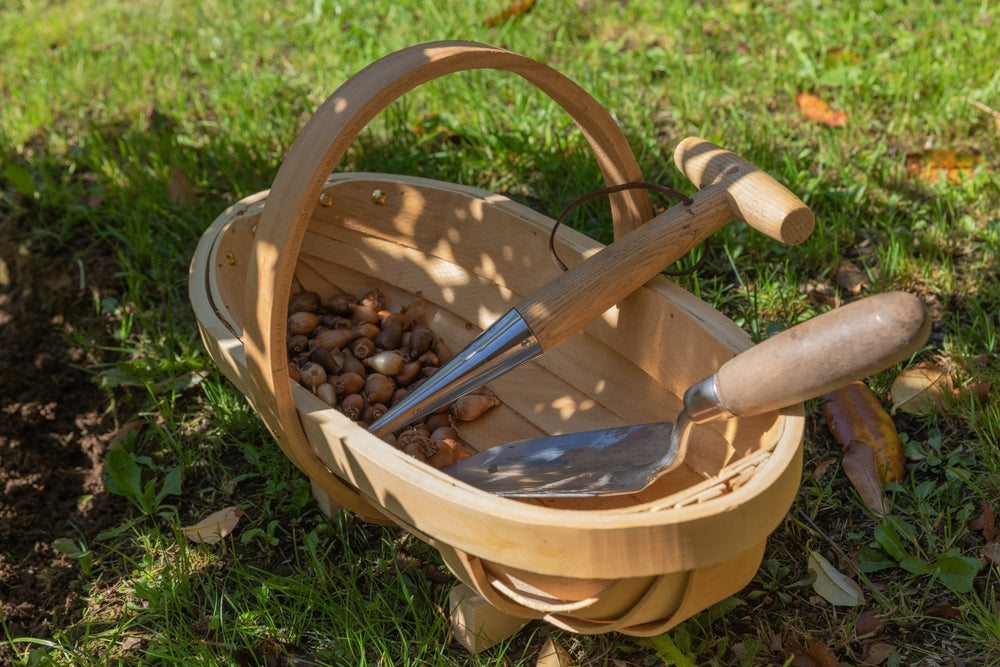The plants around us - chestnut and willow

The Sussex trug, an emblem of British craftsmanship, is a perfect example of sustainable local production. Crafted from coppiced chestnut and willow offcuts from cricket bat manufacturing, these baskets make use of the natural resources available from the county of Sussex. Dating back to the 13th century trugs evolved from sturdy ‘stave and swill’ baskets, with their design refined over generations whilst balancing their function with the materials availability locally.
Thomas Smith, establishing his business in Herstmonceux around 1829, brought trugs to national prominence. His designs caught Queen Victoria's attention at the 1851 Great Exhibition, marking a turning point for the craft. Despite challenges including world wars and agricultural mechanisation, trugs adapted, transitioning from farm use to popular gardening tools.
Trug makers follow a standardized sizing system, from No.1 (smallest) to No.10 (full bushel). The craft has evolved to include various designs such as garden, square, round, and oval trugs, each serving specific purposes. Some artisans also craft miniature versions, demonstrating their skill at smaller scales. They've long served two markets - utilitarian versions for practical use and decorative trugs for ornamental purposes. Today, three small commercial enterprises continue producing traditional Sussex trugs, preserving this centuries-old craft.







